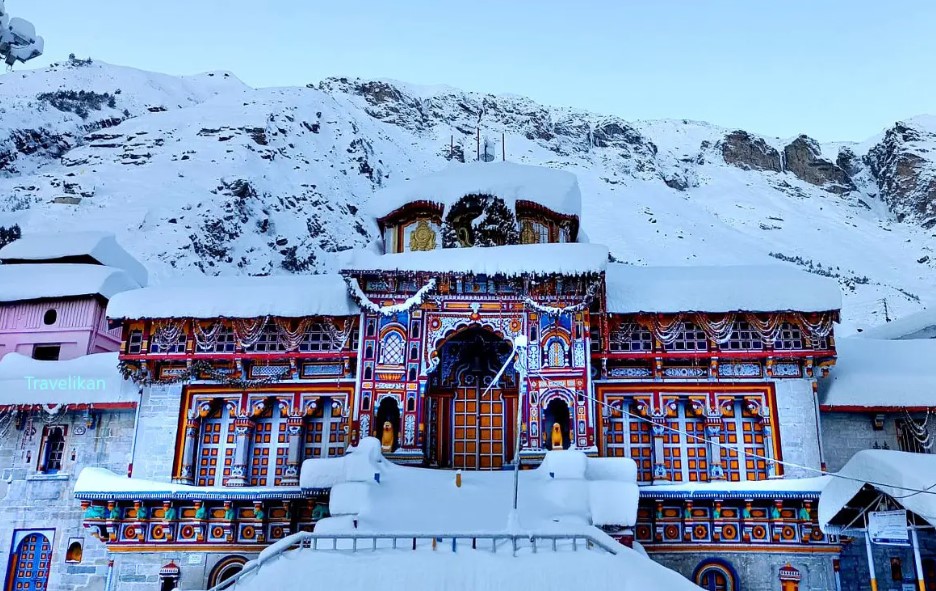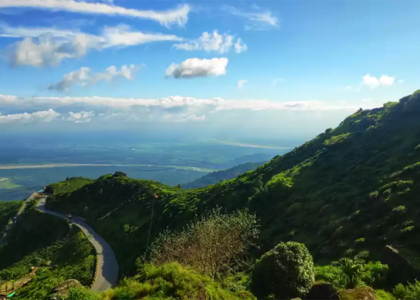
Badrinath, one of the country’s holiest temples, is one of the four sacred places of God (Char Dham) and also one of the Char Dham of Uttarakhand, commonly known as the ‘Chota Char Dham’.
Badrinath Temple is also referred to as the Badrinarayan Temple due to the fact that it is devoted to Lord Vishnu in his avatar as Badrinaryan. The temple is located in Badrinath village in Uttarakhand’s Chamoli district.
The Temple: According to legend, Adi Shankaracharya, the renowned scholar and philosopher, erected the temple in the eighth century AD. However, the ancient temple was destroyed by an avalanche. The current temple is believed to have been constructed in the 17th century by the Garhwal Kings.
The temple that survives now is a magnificent edifice constructed in the traditional alpine style. The vibrantly coloured ‘Singh Dwar’, the temple’s main entrance, lends the temple a contemporary appearance, not to mention aesthetic attractiveness.
The temple complex has around 15 statues of Hindu deities, with the principal deity being Lord Vishnu, or Narayan, who is shown sitting in a contemplative pose, which is extremely unusual for the god, who loves to recline. The meditating deity is surrounded by a badri tree.
The mythology surrounding Badrinath Temple is several, the most renowned of which is that Lord Vishnu performed meditation here, sitting out on the mountain in very terrible weather. While he pondered, the weather deteriorated more. On witnessing her spouse in such distress, his wife, goddess Lakshmi, changed herself into a Badri (berry) tree and shielded him from above. As a result, the location was given the name Badrinarayan.
There is also a second narrative about the Holy River Ganga. It is believed that the heavenly river fell from heaven at this location, endowing Badrinath with importance.
Places to see in the vicinity of Badrinath: While in the holy town of Badrinath, there are several more fascinating and significant locations to explore. Among them are the following:
Bhim Pul: This natural rock bridge over the Saraswati draws a large number of visitors due to the folklore associated with it. When the Pandavas and their wife Draupadi arrived here, it is believed that there were no methods of crossing the river. Bhim, the most powerful of the five, then lifted a massive boulder and positioned it over the river, allowing Draupadi to pass.
Mana: The last town on the Indian side of the border, Mana is a lovely spot inhabited by the Bhotia tribes. The community is around three kilometres from the temple.
Temple of Mata Murti: This temple is devoted to the mother of Lord Vishnu’s twin incarnations, Nar and Narayan. She was a lady who prayed fervently to the Lord, pleading with him to become his embodiment. Vishnu consented and the twins emerged from her womb. Nar and Narayan afterwards killed a monster.
Vyas Cave: Legend has it that Vyas Muni, a saint, dictated the whole Mahabharata to Lord Ganesh, who recorded it. One of the cave’s peculiarities is that no sound from the outside, no matter how loud, can penetrate. As a result, it is regarded as one of the most suitable locations for meditation.
How to Get to Badrinath: Badrinath is one of the most accessible religious destinations in Uttarakhand. Road: Badrinath is accessible through buses and taxis from all major cities in the country, including the national capital Delhi. Air: The closest airport to Badrinath is Jolly Grant airport in Dehradun, about 314 kilometres away. Rail: The closest railway station is at Rishikesh, 297 kilometres away.



